33+ Sample Photography Contract Templates
-
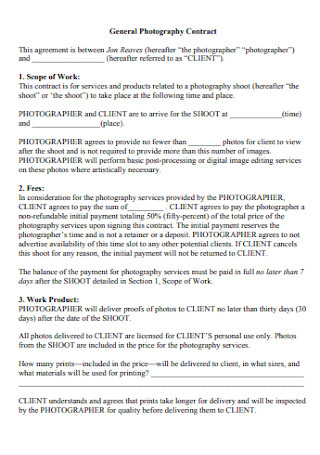
General Photography Contract
download now -
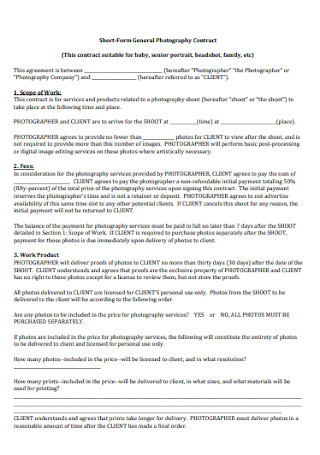
Short-Form General Photography Contract
download now -
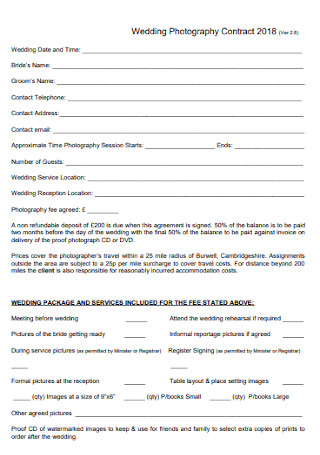
Wedding Photography Contract Template
download now -
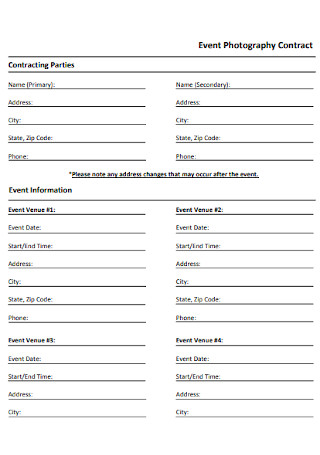
Event Photography Contract
download now -
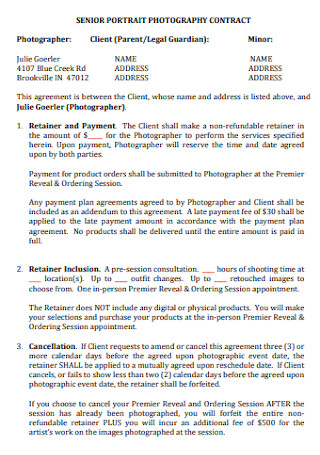
Senior Portrait Photography Contract
download now -
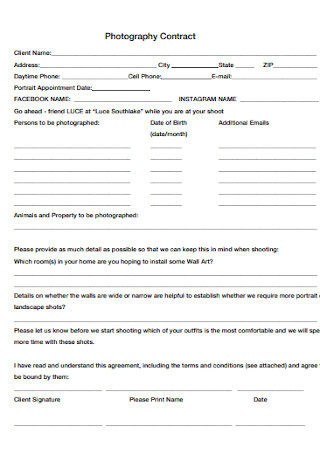
Simple Photography Contract Template
download now -
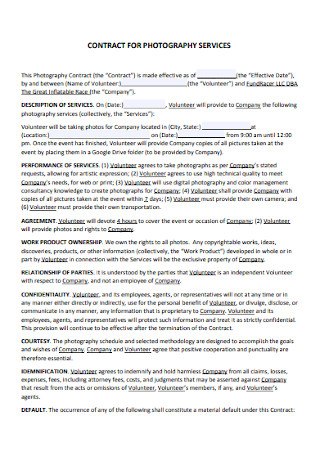
Contract for Photography Services Template
download now -

University Photographer Contract
download now -

Portrait Photography Contract
download now -
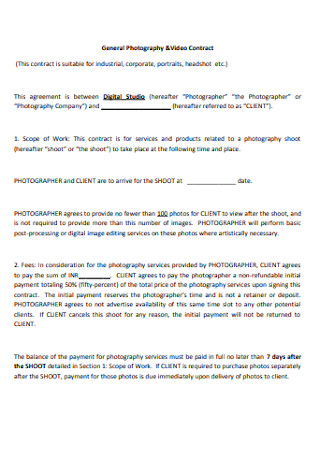
Photography and Video Contract
download now -
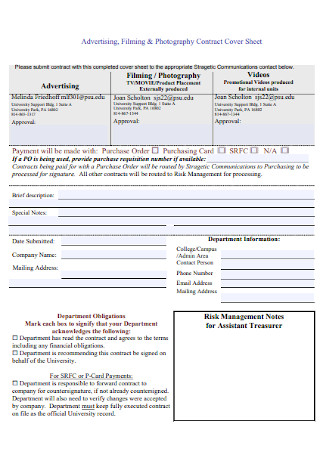
Photography Contract Cover Sheet
download now -
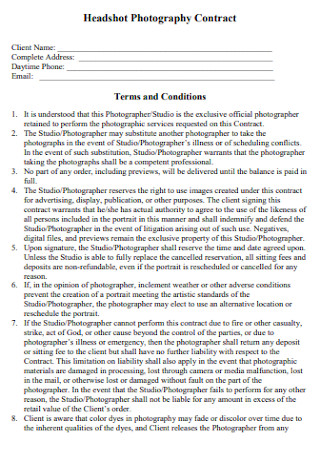
Headshot Photography Contract
download now -
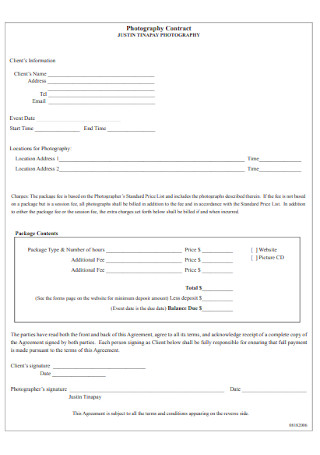
Basic Photography Contract Template
download now -
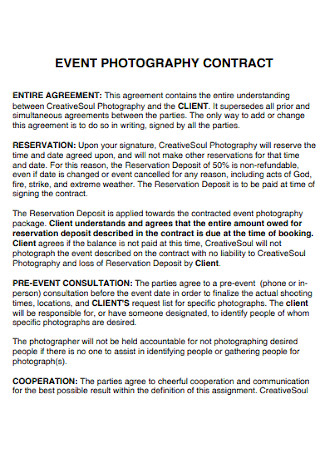
Sample Event Photography Contract
download now -
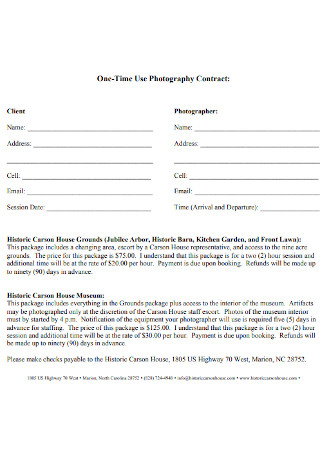
One Time Use Photography Contract
download now -

Professional Photography Contract
download now -
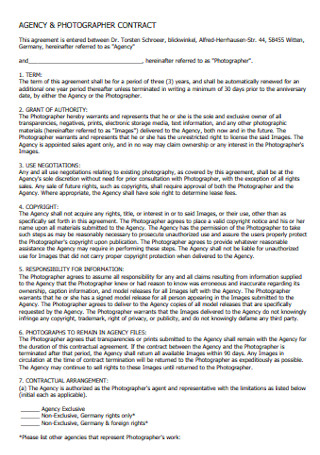
Agent and Photographer Contract
download now -
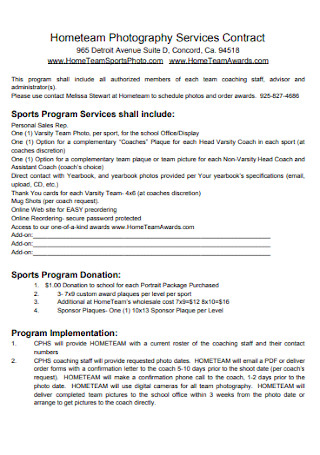
Hometeam Photography Services Contract
download now -
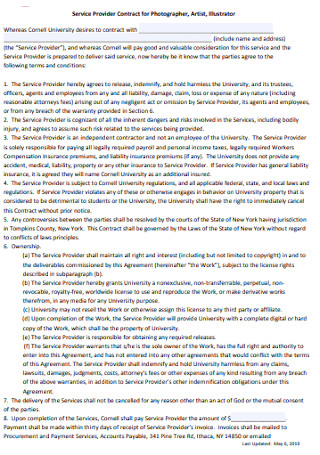
Service Provider Contract for Photographer
download now -
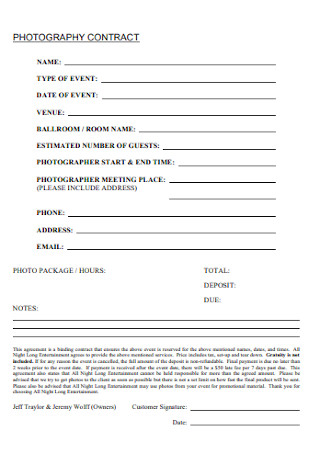
Standard Photography Contract Template
download now -
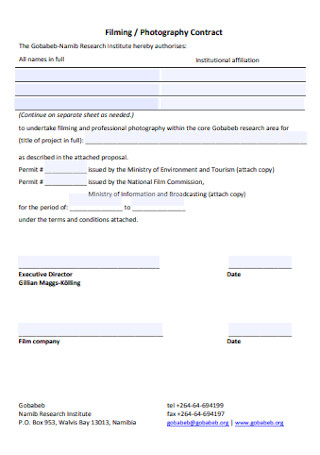
Filming and Photography Contract
download now -
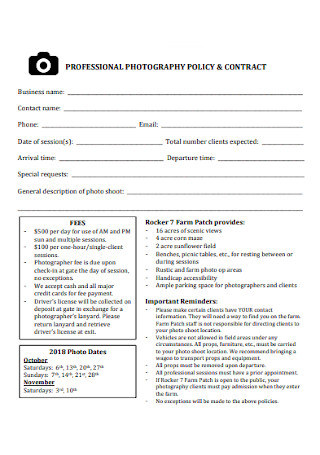
Professional Photography Policy and Contract
download now -
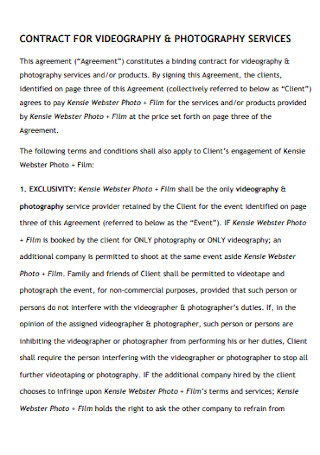
Contract for Vidiography and Photography Template
download now -

Formal Photography Contract
download now -
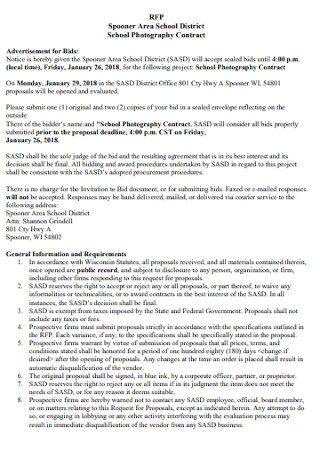
School Photography Contract
download now -
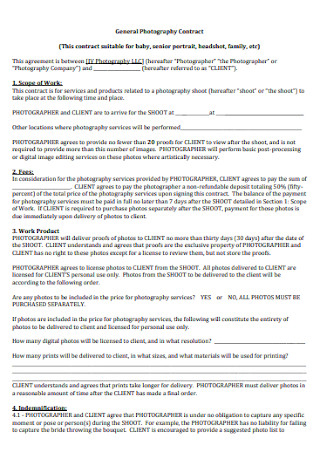
General Photography Contract Example
download now -
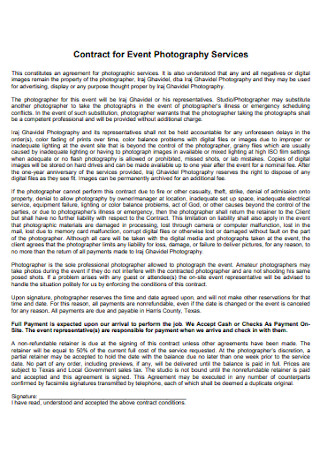
Contract for Event Photography Services
download now -

Photography Contract Format
download now -
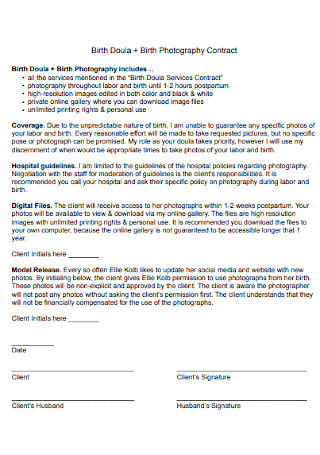
Birth Photography Contract
download now -
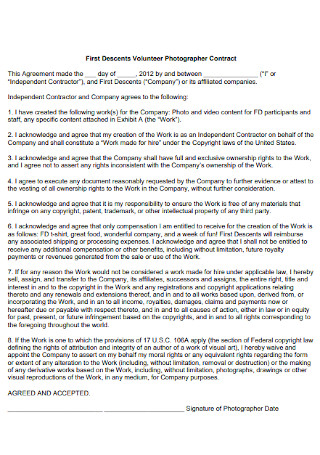
Volunteer Photographer Contract
download now -

Photography Work of Services Contract
download now -
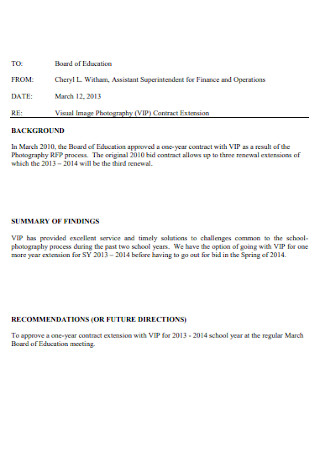
Visual Image Photography Contract
download now -

Award Photography Contract Template
download now -
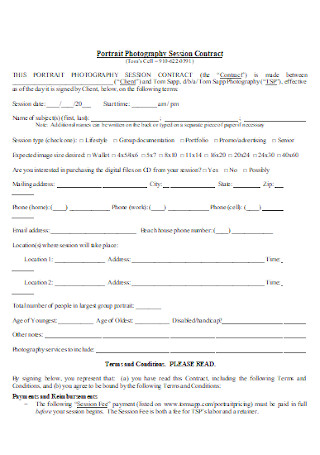
Portrait Photography Session Contract
download now
FREE Photography Contract s to Download
33+ Sample Photography Contract Templates
What Is a Photography Contract?
Why Is Photography Contract Important?
Depth of Field: A Brief Photography History
Focal Points of a Photography Contract
Flashing Tips: How to Make a Professional Photography Contract
FAQs
Do I need to use a photography contract?
Can photographers use the photos without a release form?
How much do photographers earn per hour?
What Is a Photography Contract?
First of all, a photographer handles the art of capturing pictures. In case any client or business wants to hire photographers for professional photography services, a formal agreement must commence. Once clients and photographers come up with a mutual agreement, they then put the terms into writing, and such a written document is called the photography contract. Said business contract defines the services needed to perform by any professional or freelance photographer. A short description is that a client receives the professional service and pictures coming from the photographer. Meanwhile, the photographer gets payment as given by the client. Once both parties sign the contract, they have to fulfill their obligations as it will be enforceable by law.
According to the U.S. Bureau of Labor Statistics, the estimated employment under American photographers reached up to 49,560 in May 2018. More about the U.S. photographers, their mean annual wage estimate is approximately $42,770. On the other hand, a 2018 Statista survey mentioned that Americans with a massive interest in photography as their hobby were around 31.36%.
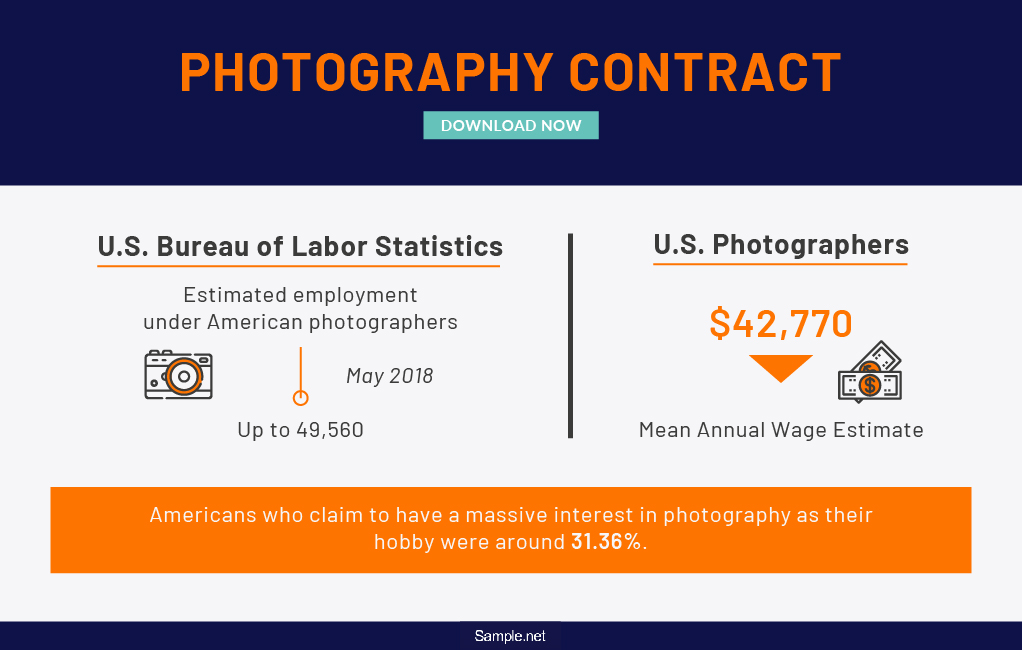
Why Is Photography Contract Important?
You discovered earlier that photography contracts contain business instructions between parties and obligations under the law. Besides those, what else makes such a contract pivotal? Keep in mind that this critical business document contains lots of information. For example, this agreement includes the total cost of how much photography services are. Moreover, there will be clear arrangements regarding compensation, liabilities, agreement duration, and other types of services. What remains true is that security and protection play a big role inside this contract rather than depending on an oral agreement alone. That is because anyone who breaks the rules will follow the consequences stipulated under the form rather than sneakily getting away.
Depth of Field: A Brief Photography History
Now, what about photography’s importance? Why don’t we head back to for an in-depth discussion about photography’s history? Of course, DSLRs and smartphones with cameras were not a thing way back. Imagine in the 5th century B.C.E., for example, and photography was still a mere idea. However, the 11th century changed the game when one Iraqi scientist invented the camera obscura. This first camera had a pinhole inside a tent until it can slowly project pictures on the outer tent or darker spot. Besides recording images, cameras back then were known for projecting on other surfaces anyway. Therefore, chances are inverted images get seen. Thankfully, Joseph Nicephore Niepce began a more permanent camera using the camera obscura in its portable version back in France of the late 1830s. With its exceptional pewter plate exposure, fading right away no longer happens to any recorded image. A quick truth about the olden times is that photographers were only for skilled and wealthy individuals.
Fast forward to the 1880s, George Eastman invented Kodak. At this point, rolled films occur instead of the conventional solid plates. A single boxed camera with a single lens can already develop up to a hundred film exposures. What made this era special is how anyone can be a photographer as long as they have the camera. Kodak’s cameras were affordable that ordinary people could own them. Because of such iconic invention, more advanced creations popped up, mainly when digital cameras existed. Thus, you depend on user-friendly cameras that produce high-quality photographs. At the end of the day, a lot of professionals really worked hard to deliver better cameras and images to benefit people. In practicing photography, skills are required, too, rather than just having a camera. You cannot just belittle the job of photographers since, in pictures, giving an outstanding output or image is the goal. To make the product great, clients and photographers have to coordinate with each other to deal with photography services, as discussed in service contracts.
Focal Points of a Photography Contract
The Bureau of Labor Statistics’ research survey estimated, as of May 2018, that employment under the U.S. photographers was approximately 49,560. How much more when you think about professional photographers on a global scale? Of course, a lot would be involved. When these workers deal with photography contracts, what do you think such forms contain? The easy way of familiarizing its sections, clauses, and parts is to take note of the focal elements inside a photography contract:
Flashing Tips: How to Make a Professional Photography Contract
Back to the Bureau of Labor Statistics’ 2018 survey, American photographers have a mean wage estimate of $42,770 annually. More so, a photographer’s wage also gets talked about in a contract. By earning, a photographer has to meet with the demands required by whoever hires them. Now the real question is, how do you perfect a photography contract? Whether you are the client or the photographer, knowing what makes up its document is essential for awareness purposes. Thus, you take a peek at these flashing tips to help you make a professional photography contract:
Step 1: Draft a Plan
Begin the planning process in case you are still unsure of how it goes. If you are a client, then you create a checklist first about every single thing you want from a photographer. Maybe you need help with school photography to advertise the institution soon. On the photographer’s side, it is wise to list down the services you can do and not do to keep the clients aware of your work. For example, do you belong in the freelance photography sector, or are you under a company? After listing everything, you slowly draft a sentence form of such information. Then, you download a photography contract template from our collection.
Step 2: Make an Introductory Statement
Why is the template important, you may ask? Easy, it is where you transfer the information you drafted a while ago. Tweak the template as you add the things you listed. Changing the format and content is even welcome. Next, you follow up on the introduction. Every contract should get appropriately introduced. And, an introduction should briefly state what the contract is mainly about. This segment is where the photography contract needs a special mention. The same goes if the event involved is a wedding, birthday, or any example. Most importantly, you introduce the parties for the introductory statement to recognize who is who.
Step 3: Insert the Elements of a Photography Contract
Keep in mind that party information is not the only element in a contract. As discussed on the focal points of photography contracts before, there are still more elements to exhibit. This part is where the schedule, provisions, policies, and more come to play. Always be cautious about what to incorporate, particularly with the rules and legal policies. Getting wrong on the critical parts, including termination, cancellation, or any dispute, may leave the form in becoming void. For extra help on the legal terms, contacting a professional lawyer is a wise move.
Step 4: End with a Signature Line
Contracts must end with a signature line. But first, did you already skim and edit the full content? A bunch of mistakes would be unforgivable, especially when contracts are legal documents as well. It may cost you to fail in keeping the errors, especially if the consequences are dire. You prevent any dismal effect if you reviewed and evaluated the document before having others sign it. Just know that having both the client and the photographer’s signatures will confirm and start the agreement.
FAQs
Do I need to use a photography contract?
The general rule is that getting into serious business between a photography and a client should undergo a contract. Many photographers even prefer that because some people do not take their job seriously. A survey even mentioned that 31.36% of Americans are interested in photography as their hobby. However, photographers make a living too, and they are not practicing their skills for free or as a hobby only. With a contract, the business side gets taken seriously.
Can photographers use the photos without a release form?
Photographers may get sued if they use photos for profit or commercial purposes without any release form or consent letter from their subjects. Moreover, clients cannot just use pictures commercially without a photographer’s signed photo release form. At least there is fairness for both sides, and a contract shall help in settling these matters.
How much do photographers earn per hour?
A photographer can earn at least $15.48 average in terms of an hourly wage. Some salaries could range from $9 to $27 per hour. Consequently, it depends on what got stipulated under the contract.
Notable photographer Destin Sparks once said, “Photography is the story I fail to put into words.” Any picture can express feelings or sentiments that many cannot verbalize. And how much more if someone skilled does it, specifically a professional photographer? Even so, a client can participate in any project plan requiring photography, too, if he or she has exciting plans. The best duo for photography projects is when clients work hand in hand with a thorough plan while the photographer executes with his or her creativity. In fact, that perfect combination of work may spark upon having both parties sign a photography contract—thus, the foundation of that ideal duo.
